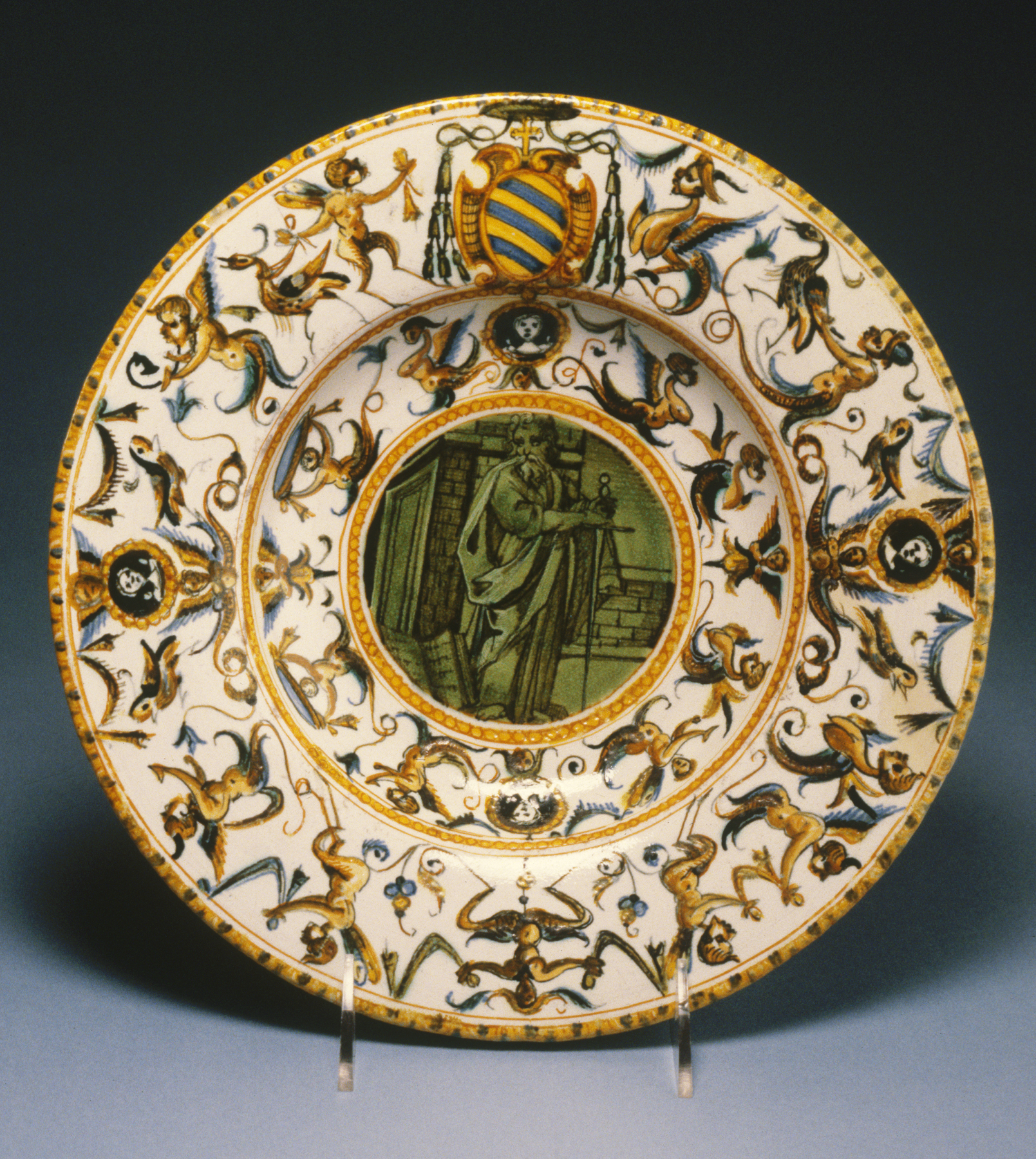Broad-Rimmed Dish with Saint Paul
(Renaissance Europe )
The central roundel of this dish depicts Saint Paul, grasping a sword (some early sources suggest that he was deheaded) while a book (referencing his writings) lies open at his feet. The outer rings illustrate a series of mythical figures, birds, and medallions against a white background. These figures are representative of ‘grotesque’ decoration, an ornamental style that became popular on painted maiolica during the second half of the sixteenth century. The name ‘grotesque’ derives from “grotte,” a term used to describe the Roman palace belonging to the Emperor Nero (37-68 AD), which was rediscovered in 1480, and was painted with these elaborate, whimsical motifs. Five other plates are known from this service all embellished with the same coat of arms, described as possibly of the Contarini family of Venice. The green hat and cross above the heraldic device signify that the patron was a bishop. The back is glazed and includes four yellow-ochre circles.
This dish was made by the Patanazzi family workshop in Urbino. At least four Patanazzi family members, Antonio, Alfonso, Francesco, and Vincenzo, were active maiolica painters during the late sixteenth century, and were skilled at reproducing the ‘grotesque’ motifs. To see more works by the Patanazzi family workshop, click on the name in the creator field; for more on ‘maiolica’ in general, see 48.1336..
Provenance
Provenance (from the French provenir, 'to come from/forth') is the chronology of the ownership, custody, or location of a historical object. Learn more about provenance at the Walters.
Fountaine Collection [date and mode of acquisition unknown] [no. 155]; H. Wencke Collection, Hamburg [date and mode of acquisition unknown] [no. 81 (?)]; Seligmann, Paris [date and mode of acquisition unknown]; Henry Walters, Baltimore, May 11, 1905, by purchase; Walters Art Museum, 1931, by bequest.
Exhibitions
| 1971-1972 | World of Wonder. The Walters Art Gallery, Baltimore. |
Geographies
Italy, Urbino (Place of Origin)
Measurements
2 3/16 x 10 5/8 in. (5.5 x 27 cm)
Credit Line
Acquired by Henry Walters, 1905
Location in Museum
Accession Number
In libraries, galleries, museums, and archives, an accession number is a unique identifier assigned to each object in the collection.
In libraries, galleries, museums, and archives, an accession number is a unique identifier assigned to each object in the collection.
48.1516


